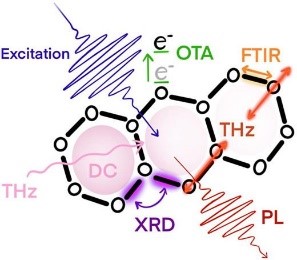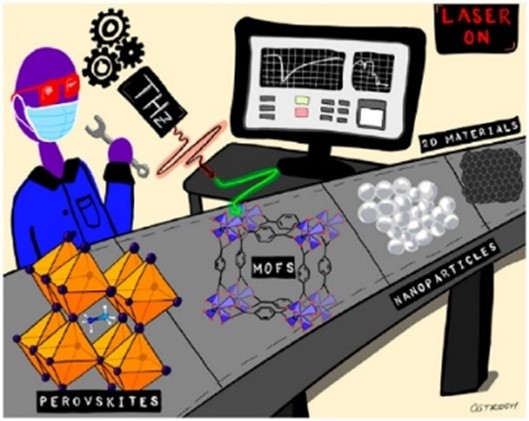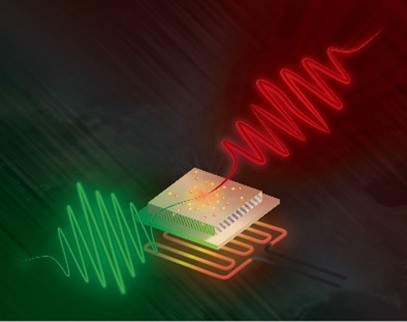
Atomic, Molecular, and Optical physics explore the interaction of electromagnetic waves with molecules, matter, and photonic devices. At UNT, we utilize a large variety of different techniques leveraging the visible range of the EM-spectrum, the IR, and the THz range. We study materials and quantum properties to learn about basic physics governing the propagation of light in materials and integrated photonics, a field crucial for communication applications. We explore heat transport and radiation forming the basis for future energy-harvesting devices. Furthermore, we use THz radiation to understand conductivity and photoconductivity to explore materials for future solar applications, superconductivity, and energy storage. We explore quantum systems contributing to the foundation of quantum computing and information science.
The research in the Atomic, Molecular, and Optical physics groups combines experimental work with theoretical modeling; provides potential students with hands-on experience with CW lasers, ultrafast lasers, and advanced computational software. Our groups are interdisciplinary, working with engineers, chemists, and biologists to explore the most exciting physical processes in emerging and quantum materials.
Research in the field of AMO is conducted by Jens Neu, Sandra Quintanilla, Yuri Rostovtsev, and Yuzhe Xiao.
The Ultrafast THz Spectroscopy Group, led by Professor Jens Neu, uses THz spectroscopy to understand ultrafast photo physics in emerging materials; particularly what determines, and limits, the photo conductivity in novel materials. Understanding these limitations is the crucial step towards the development of next generation solar cell materials. We work as an interdisciplinary team and collaborate with outstanding engineering, material science and chemistry groups all over the world. We are seeking motivated graduate students and post docs, please see our homepage for more information.
Dr. Sandra Ward Quintanilla is an atomic theorist primarily interested in (effective) three-body and (effective) four-body Coulomb systems involving a positron. Currently, her graduate students are considering two separate projects. The first is positron and electron elastic scattering from helium using a one-electron model potential to represent the helium atom. The second is elastic electron-positronium scattering and the photo detachment of the positronium negative ion. Dr. Quintanilla has an international collaboration with Dr. Peter Van Reeth (University College London, London, UK). In collaboration with Dr. Kathryn Hamilton (University of Colorado, Denver), she is using the AMOS Gateway (https://amosgateway.org) to consider electron-helium scattering. Dr. Quintanilla has employed a variety of methods in atomic physics, which include the Kohn variational-type methods, the close-coupling method, effective range theories, an impulse approximation, and the Coulomb-Born approximation.
Dr. Yuri Rostovtsev's current research interests cover several areas of matter-field interactions involving quantum coherence and interference, in particular, laser physics and laser spectroscopy, quantum, and nonlinear optics, nanophotonics, biophotons, and quantum information.
Xiao Research Group, led by Professor Yuzhe Xiao, engages in both experimental and theoretical research across the fields of optics, thermal physics, and quantum technologies. We are interested in exploring the physics of thermal radiation from nanostructured objects and developing new thermal-radiation-based technologies for advanced sensing, material characterization, and mid-infrared light sources. We are looking for passionate researchers who are interested in exploring new scientific frontiers at all levels, please see our homepage for more information.

